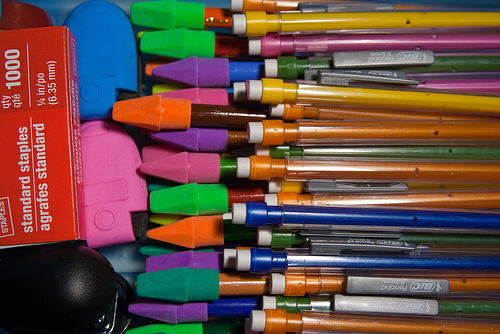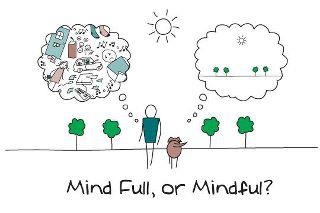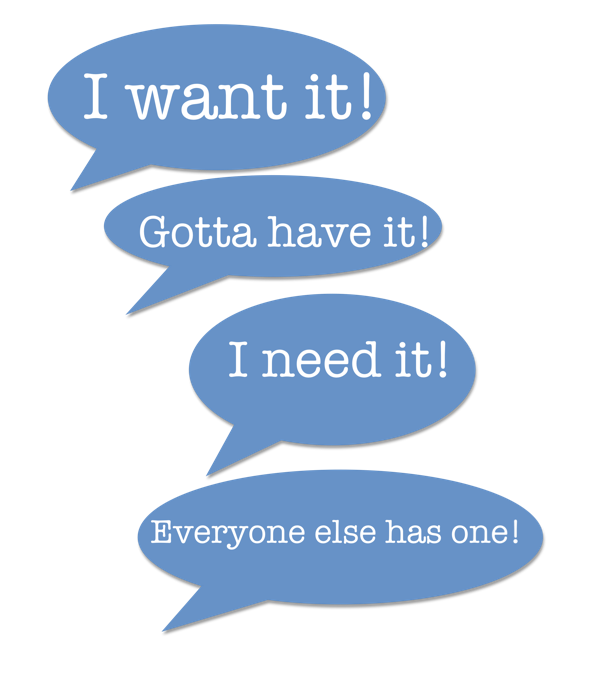“Vacation, all I ever wanted. Vacation, had to get away. Vacation, meant to be spent alone.” Well, maybe not alone, in fact with 13 other people, but what a vacation it was! After returning from an amazing vacation a few weeks ago, I can’t seem to get that classic 80’s tune from the Go-Go’s out of my head. (Yes -- I was/am a huge Go-Go’s fan.) In fact, I can’t seem to get my head back from vacation.
This was no ordinary vacation. I spent six days living at sea on a sailboat with my family of five. Along for the adventure were two other families, dear friends, sailing across the beautiful blue Caribbean sea in their own boat, meeting us at remote islands each day to hike, kayak, snorkel, swim and play on the beach.
I realize that this was a very unique vacation, a vacation that is probably not for everyone, and one that was totally my cup of tea (or my cup of rum punch as the case may be). Each day I enjoyed watching the sun rise and the sun set. I kayaked each morning over the still, calm water before cooking and eating breakfast with my family. At breakfast, we talked about the beauty of the crystal blue water around us and imagined all the pirates and explorers who had sailed on these seas before us. After breakfast, we sailed on to our next destination, thrust forward only by the power of the wind as it caught our sails.
It all sounds heavenly, but it was not all luxury cruising. During our sailing time, we all pitched in to help hoist the sails, swab the deck, check the lines and clean the galley. We had limited water onboard, so water conservation in toilets, showers and sinks was a challenge and a necessity. No cell phones, no internet, no cable TV. Our time was spent reading, talking, swimming, snorkeling, exploring, and simply enjoying the beauty of our surroundings. We were on our own, no captain and no crew, just us. For me, it was the ultimate exercise in getting away from it all.
Now that I am home and back to a busy life in suburbia, I find myself with the same feeling I have after a wonderful yoga practice and blissful shavasana (for non-yogis, shavasana is done at the end of a yoga class when you lie on your back with your eyes closed, breathing deeply, as you relax the muscles that you just worked and you melt into the ground beneath you). After shavasana, I often ask myself, how can I keep this deep state of calm, quiet and relaxation going off my yoga mat? Since returning from my sailing vacation, I have been asking myself, how can I hold on to that blissful, relaxing feeling of my vacation now that I am home and back to my daily routine?
To figure out the answer to this question, I made a list of what it was about the vacation that helped me to feel so connected, relaxed and rested. I concluded that if I could come up with a list of what made the vacation so fantastic, I would work to incorporate those things into my life at home in an effort to enjoy each day in a more relaxed, less stressful and less exhausting way. Why not make a little part of each day like a mini-vacation? Why wait for those few weeks a year to truly unwind and nurture myself? Short of magically creating the beautiful blue sea, ocean breezes, rum punch on a sandy beach, and a beautiful boat to sail on, here is what I came up with:
(1) Start the day with some time for peace, quiet and contemplation
(2) Get exercise everyday - keep that body moving
(3) Connect with Nature any time you can
(4) Eat healthy, fresh food and get some rest
(5) Spend quality time connecting with family and friends
If I could treat myself to these five things each day, would I feel some of that vacation state of mind back home? I will say that I have tried it and, although it is not quite the Caribbean around here, it has been wonderful to take time each day to indulge in what makes me happy and more peaceful, and to take a mini break in an otherwise hectic day. Most importantly is the idea that instead of pushing through the unpleasant business of each day and simply dreaming of the next opportunity to take a break from it all, I have tried to truly enjoy each day as it comes by incorporating into each day some of what makes me feel happy and peaceful. Here are some observations I have made along the way and suggestions for how to incorporate these five things into your life.
First, it is interesting to me that once our lives get busier and more stressful, the first things that we “have no time for” are the things we need most. The first thing to be cut from our schedules are often the things that I listed above. Ironically, these things are needed most when we are busy and stressed. By incorporating them into our lives, we will feel less stressed and better able to cope. We will also have more energy to tackle our long “to do” lists. If we include in our days the five things listed above, we can maintain at least some of that calm that we had on vacation and we won’t need to begin the count down to our next vacation the moment we return home from our last getaway.
Start the day off with a few minutes of calm.
On vacation, we have physically removed ourselves from the distractions and aggravations of our everyday lives. When we are "away from it all," we are able to focus on truly being present and enjoying every moment of our getaway. We are able to experience fully where we are and how relaxed we feel both physically and mentally. When we return home, we find ourselves back in the thick of it, our minds twirling with what we need to do next, no longer able to enjoy being where we are. With some practice and a little effort, however, we can foster our ability to bring that focused, relaxed feeling into our lives everyday by simply taking the time to recreate that vacation state of mind wherever we are.
Most of us hear our alarms each morning and like a good thoroughbred at the starting gate, the bell sounds and we are off to the races. We dread getting out of bed because what follows is often unpleasant -- yelling at the kids to get up as we rush through our morning routine, hurrying and scurrying to get everyone out the door. Tomorrow, try something different. Set your alarm half an hour earlier and enjoy a few minutes of quiet time before the busyness of the day begins. Stretch your body while taking a few deep breaths, sit for a few minutes just taking some slow deep breaths in quiet meditation while concentrating only on your breathing, enjoy a quiet cup of coffee or tea while taking in the view out the window, or sit outside for a few quiet minutes if the weather is nice. Notice how good that feels, how peaceful, how vacation-like. Those wonderful moments of quiet each morning can set you up for a calmer, less stressful and more enjoyable day ahead. Think of it as a treat for yourself, a little pampering, a chance to center yourself before the busy day begins. Don’t use that time to go through your “to do” lists, watch the news or check your e-mail. Instead, use it as a time to really relax and take in the peaceful quiet and stillness of the morning. You deserve it and the few less minutes of sleep will pay off in a calmer, more peaceful you.
Get your blood pumping and enjoy the outdoors
Too often, we cut out our time to exercise when our day is crammed with meetings, appointments, and a giant “to do” list. Instead, it is when we are the busiest that we need to carve out some time, whether it is a ten minute walk, a yoga class or a quick jog, to get our blood pumping and the oxygen flowing in our body. This will increase your energy level and your productivity, which will help you to get all that work done. Research shows that exercise helps reduce the physical symptoms of stress in the body, which will also help you to feel calmer, better able to focus and be more productive. One great trick that I often use is to find little ways to get more physical movement into my day, especially when I don't have time for a full workout. For example, park your car in a spot far away from the store and take a longer walk to the door (rather than circling a few extra times to find the closest spot). Take the stairs instead of the elevator or escalator. Walk or ride your bike to your destination instead of taking a cab, bus, subway or car.
You can use this same strategy as an opportunity to spend some time outside where you can enjoy the fresh air and the nature around you. Many studies have shown that simply being outside, and enjoying nature can bring great physical and psychological benefits to people. Try not to be preoccupied by your thoughts -- your “to do” list and your schedule. Rather, take a break from the torrent of thoughts and be fully present in your surroundings. You may be amazed at how nice that can be and how refreshed you will feel.
Eat Healthy Foods and Get Some Rest
When we are busy, we too often cut out the simple pleasure of eating slowly, joyfully, and healthfully. We grab what we can on the go, and often that “fast food” is unhealthy food. In addition, we often reward ourselves when we are stressed with food high in fat and sugar. Unfortunately, the pleasure we feel from eating these foods doesn’t last long and we soon are left feeling bloated, tired (the crash of the sugar high) and upset with ourselves for eating what we did. Instead, we need to remember to fuel ourselves with fresh, healthy food that will make us feel good not only for the short time we are eating it, but for the rest of the day. Eating a healthy and nutritious snack will not only give us the energy that we need to get through the day, but it is something that we can do to nourish our souls by treating ourselves to something that is good for us. Think of eating healthfully as a way to pamper yourself, to treat yourself with great care by filling your body with what it needs to do all that important work and to feel good while doing it.
In addition to eating well, we need to be sure to get plenty of rest. When we are on vacation, we often feel like we can sleep for days. We are simply exhausted from our extremely busy schedules at home. At home, many of us fall into that caffeine trap of needing that morning and afternoon pick me up to give us the energy to make it through the day. Often those caffeinated drinks are also loaded with sugar (again a sugar and caffeine high followed by a big crash). Just be aware that your body is telling you that you need to rest, not drink more caffeine. A good night sleep can do wonders for your body, mind and spirit!
Connect with Family and Friends
Finally, we need to make time to connect with our families and friends. We need to make a conscious effort to have quality family time when we are home and to connect with those special people in our lives. This is more important than most, if not all, of the things that we put in the way of that time together. Most of us have heard about the many studies that show that children who have family meals are much less likely to become involved with drugs and alcohol, have better social skills, better grades, and a closer connection to their family. Those alone are enough reason to take time out to have a family meal. But taking the time to connect with your family and friends will have incredibly positive effects on you as well. It makes you feel loved and connected to those closest to you.
After my wonderful sailing adventure, I realized that we don’t have to live for vacation, to count down until the next opportunity we have to treat ourselves well. We don't need a vacation to enjoy some quiet time or to create quality time with our family and friends. We can incorporate a little vacation time into every day and treat ourselves to those simple pleasures that will nourish our minds, our bodies and our spirits.





















